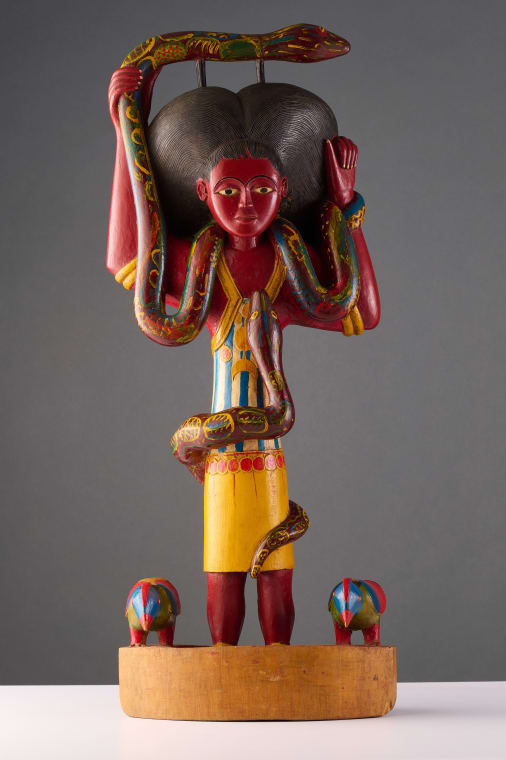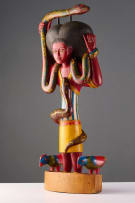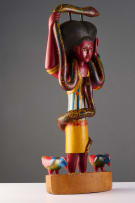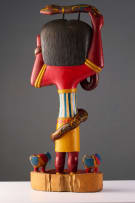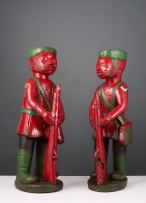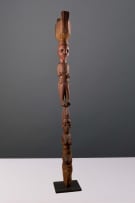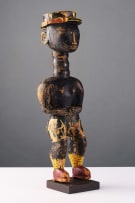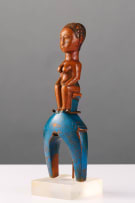The Starcke Collection of African Art
Timed Online Auction, 3 - 19 November 2025
African Art and Artefacts
Incl. Buyer's Premium & VAT
About this Item
Provenance
Totem Meneghelli Gallery, Johannesburg
Notes
There are several moments of approaching the image of Mami Wata and their associated concepts, beliefs, and behaviors: first, the art history of the famous Mami Wata icon; second, anthropology, ethnography, archaeology, religious studies, myth, psychology, healing, and initiate scholarship; third, artistic inspirations in fiction, fine art, and music; fourth, New World and Caribbean connections; and, finally, Christian narration and agency.
Mami Wata speaks to human beings’ essential values, for example, life, death, rebirth, and continuity of life in connection with water and the female side of the universe. This belief system prevails in different West African countries in rural and urban areas, along the coastal region, and farther inland. Water is life—and death. Water is essential for human life. A baby floats in the womb before birth, and water floods a dying person’s lungs. Africans have venerated water spirits and deities since time immemorial.
The Mami Wata complex harbors three significant elements: a Pidgin English term spelled in numerous ways, a German image turned into an icon of a woman with abundant hair holding two massive serpents, and, most importantly, pre-Christian African histories and religious beliefs and practices. These vary among ethnic groups, are complex, and may incorporate foreign ideas differently. Pan-African devotees correspond to Mami Wata’s popular image created abroad in analogous ways whereby the concept of healing plays an important part. According to Henry Drewal, she is at once originally African and imported. Still, the deity’s shrines can absorb a multitude of African, European, Christian, Hindu, and American Indian images. Caribbean variations connect to the adoration of African divinities manifest in the forces of nature, such as water.
Summary from Sabine Jell-Bahlsen's "Mami Wata"
